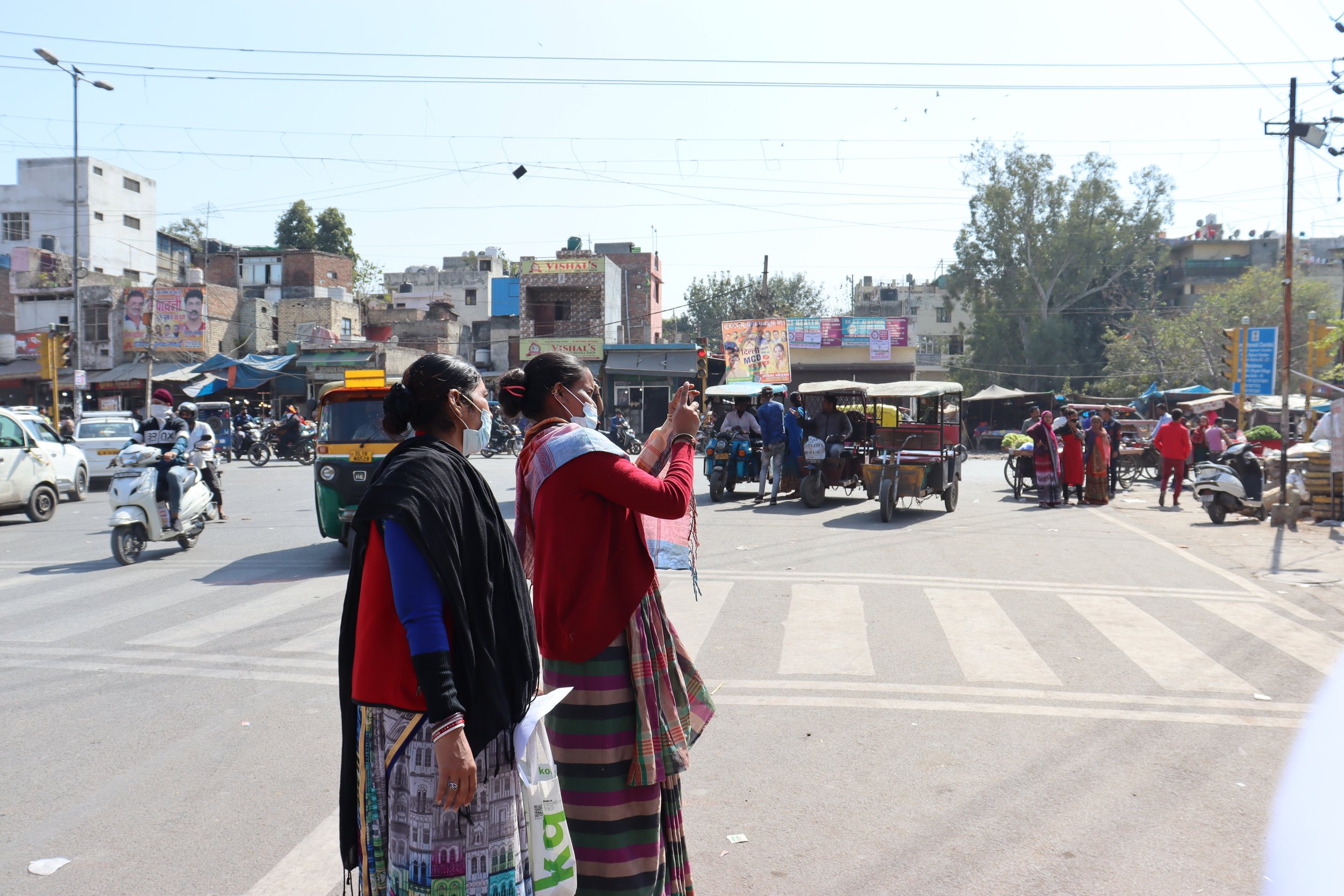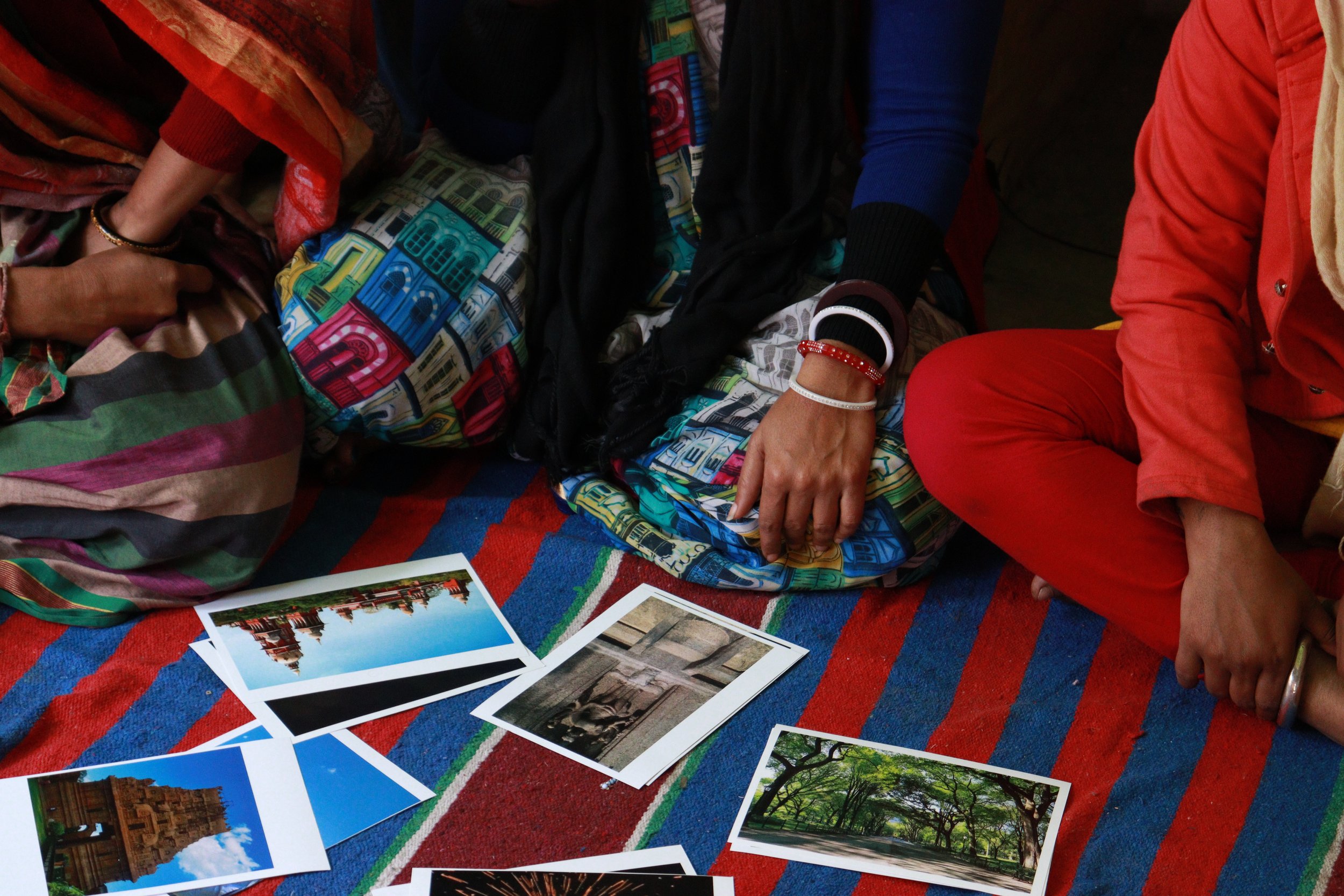
Aao, Jagah Banaye!
Context
Aao, Jagah Banaye! is a socially engaged art practice situated in Delhi’s Raghubir Nagar which includes and empowers women workers in the urban informal sector to re-imagine, reclaim and further co-create their everyday places of work.
In Delhi, 76% of women are informally employed. Women vendors constitute about 30% of the total street vendors working in the informal sector and are significant contributors to Delhi’s urban local economy, yet largely invisible from dialogue and action in top-down planning. It is observed that Informal workers often have very clear patterns of work and habitation. They set up at the same spots and at the same time every day because they have identified certain attributes of these spots that are beneficial to them - be it a requisite footfall, proximity to a formal market, work-home inter-relationship, or something as simple as shade under a tree.
Through Aao, Jagah Banaye!, we aim to explore these women workers’ personal narratives and work-mobility patterns in order to help them analyse and strengthen their relationship to their neighbourhood and to the city.
Objectives
To map the peculiarities of female informal workers' work-mobility patterns and identify and locate activities unique to the community in Raghubir Nagar through adopting a participatory action methodology
To demonstrate that the cohort is able to recognise their right to the city, question the inequalities they face on an every day basis and speak up for better inclusion, accessibility, safety, comfort and dignity at their places of work and communities
To introduce new ways of documenting lived realities and inculcate the habit of communicating via technology to the group of women using technology-based tools
Photo-Voice
Photo-voice is a participatory research method which combines photography with grassroots action to document otherwise overlooked aspects of the stakeholder group within a community. These photographs are then collaboratively interpreted through discussions or explained via voice, which also supersedes barriers to literacy. Additionally, narratives explaining how these photos highlight a particular reality are developed and used to promote dialogue with policy-makers for them to better understand the community.
We adapted the tool of photo-voice to associate the women of Raghubir Nagar with agency, memories, aspirations, and genuine know-how of the quality of their place of work, neighbourhood and city. We aim to continue documenting Movement as Informal Placemaking via the photo-voice tool.
To listen to the womens’ audio narratives:
Save the Grapevine number +44 7380333721 to your phone
Send a WhatsApp message saying “Khaata”
Listen to the women talk about their lives!
Zine-Making
The process of zine-making is a first-hand record of storytelling and publishing. It acts like a tangible form of an individual’s personal narrative which can aid in advancing stakeholder rights and their quality of life. Through the engagement process, zine-making evolved from being an outcome to becoming a crucial methodology – it aided the artists in identifying patterns underlying the women’s personal narratives.
The stories by the women of Raghubir Nagar use a mixed-media approach where the women articulate their oral histories, identities and planning perspectives through a repository of photographs, language, maps and sketches. By talking about their stories in the public realm, the women are able to reclaim some autonomy over the narrative of their lives.
Alt-Mapping
Alt-Mapping as a methodology offers an alternative approach to mainstream planning practices – it is a way to include diversity and convert expert-driven mapping into a more deliberative process.
A shared language was created with the women to help bridge the communication gap between the group and the artists. Activities unique to the community were identified and spatially located through photo-voice and sharing circles. Then, symbols were co-created for these activities and subsequent titles were borrowed from the localspeak over multiple feedback loops. Using language that the women are familiar with helps them to claim their spaces. Through our process, we hope to transform the map from a precious artefact that belongs in an archive into a publicly available resource.




